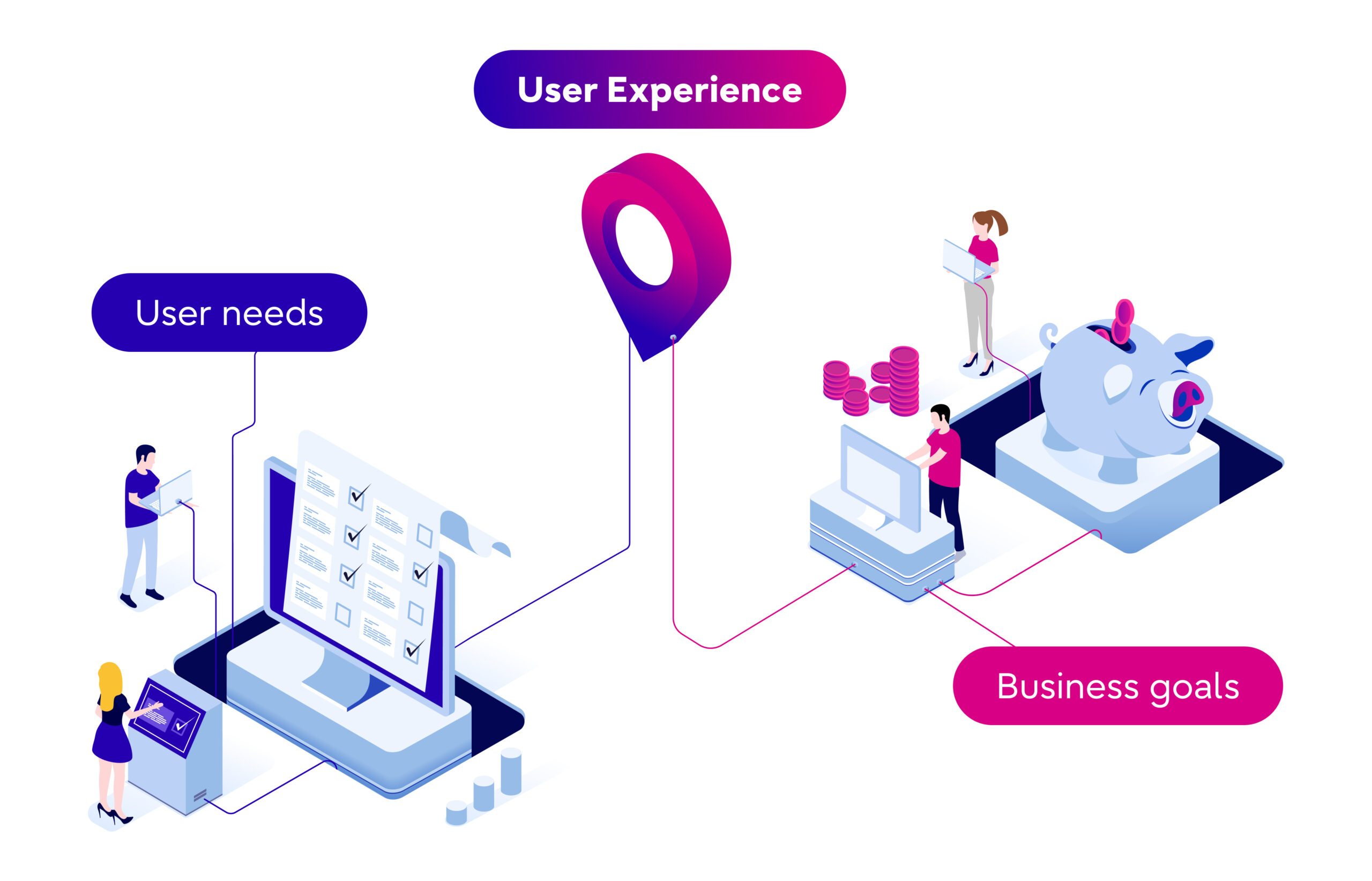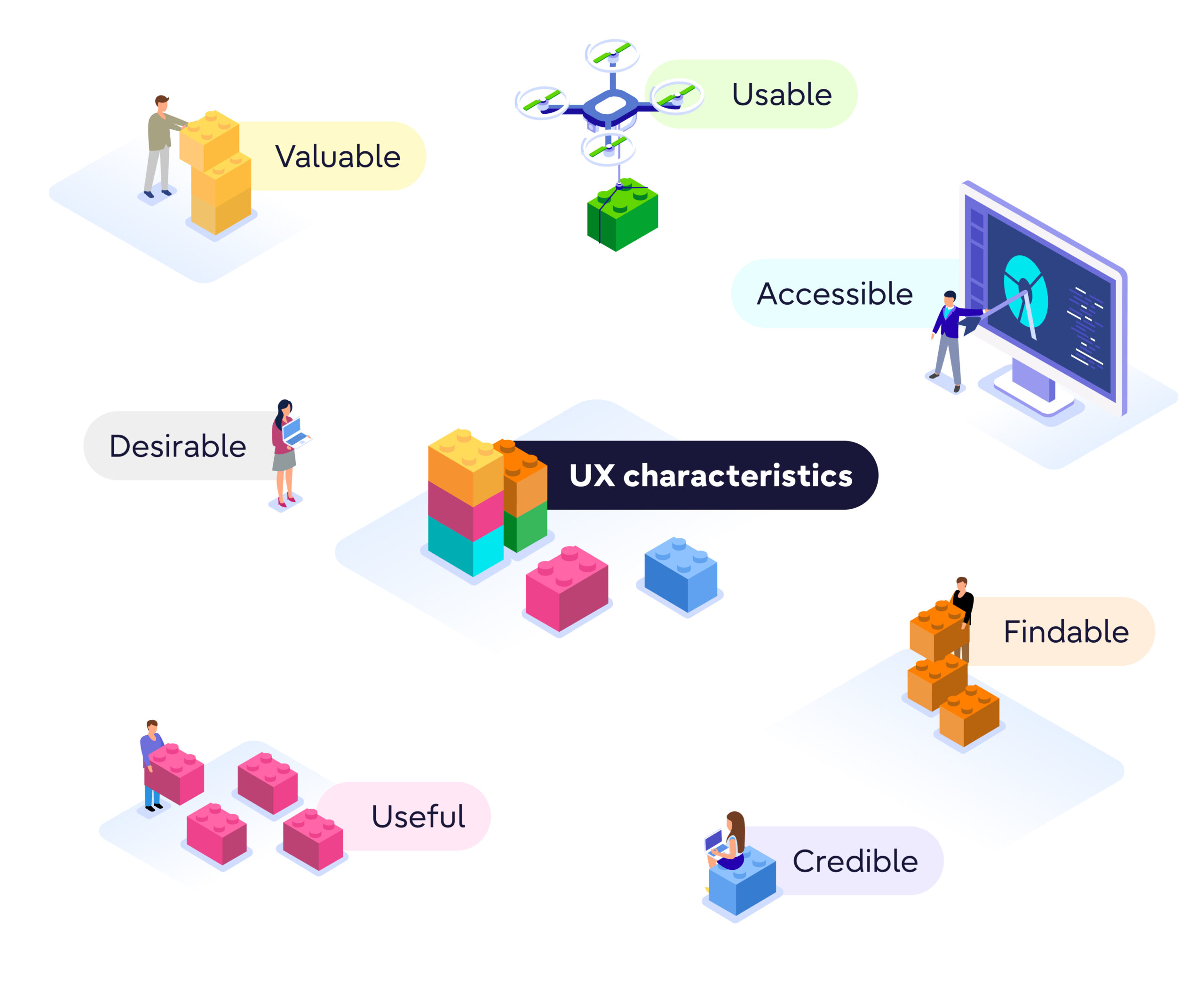DIGITAL SOLUTIONS
Data-driven UX – why data is essential in the design process?
Did you know that 88% of visitors do not return to a website if they have had a bad experience?
April 11, 2023

Data is a goldmine and can turn that percentage around explains Jeanne Labrette, UX project manager at Fujitsu. The data-driven UX design process is more effective than simple intuition-based decision making.
UX in a nutshell
Before we delve into data-driven user experience, let us describe de concept of user experience.
UX or User Experience is how people interact with a product or service. The UX design is the set of techniques to think and create an interface, meeting the expectations of the user when designing a platform. A UX strategy is not fixed, it adapts and modulates itself according to the company’s business objectives in correlation with users’ expectations.

According to Peter Morville, one of the pioneers in the field of information architecture and UX, a good user experience must respect the following 7 characteristics:

What is data-driven UX?
Let’s imagine, I ask you if you know how making happy your partner? I am pretty sure that you will answer: “Easy Peasy!”
Why? Because you know this person very well.
It is the same concept when you create or want to improve the performance of any service or product. You must well know your user and there is nothing better than the data to know them.
And this is where the term of data-driven comes into play. This concept refers to the process of designing or improving a product, based on data. The objective of this approach is not only to collect as much data as possible, to deepen the knowledge of the users. It aims to USE this data to optimize the design process and develop a user-centered product.
Why is it important?
Data offers insights that you can’t find anywhere else. The UX specialists are not the end users, so they can’t base their work on intuition or best practices. Therefore, the designer must collect all the necessary data to efficiently identify users’ needs, goals and motivations.
Creating a data-driven UX will increase customer satisfaction and avoid frustration. Moreover, a personalized experience will also help to increase your users’ trust.
As you know, a satisfied customer is good for business. According to the study by Forrester, The Six Steps For Justifying Better UX, 1$ dollar invested in UX brings, on average, 100$ in return. This amounts to an ROI of over 9,900%.
How to collect and use data?
Everyday, we generate a multitude of data. Let see how we can collect them for creating the most effective user experience.
1/ User test or usability test
User testing consists of having your users test your product/service in real conditions. During the session you will be able to observe the users and interview them about their experience.
The test is the most powerful tool to improve the efficiency of a digital product. It identifies 90% of usability problems. It allows to increase the transformation rate in a sustainable way.
2/ Interview
Interviews are an ideal way to collect qualitative data from your users as their expectations and their pains. This type of technique will help you to refine your value proposition.
3/ A/B Testing
This methodology for comparing two versions of a webpage or app will help you to understand how certain elements can influence the behavior of your users in aim to convert the most.
4/ Analytics
Tracking tools like Google Analytics can help gather quantitative data like bounce rate, sex, age, traffic sources, type of device…
5/ Survey
With survey, you’ll get quantitative and qualitative data which will complete other data from the user tests, A/B test, etc.
As you can see, it is by using this concept that Fujitsu Luxembourg can provide a product or service that better meets users’ needs. We are convinced that with data driven UX you will be able to understand your customers in their entirety.
So now, let be user centric!